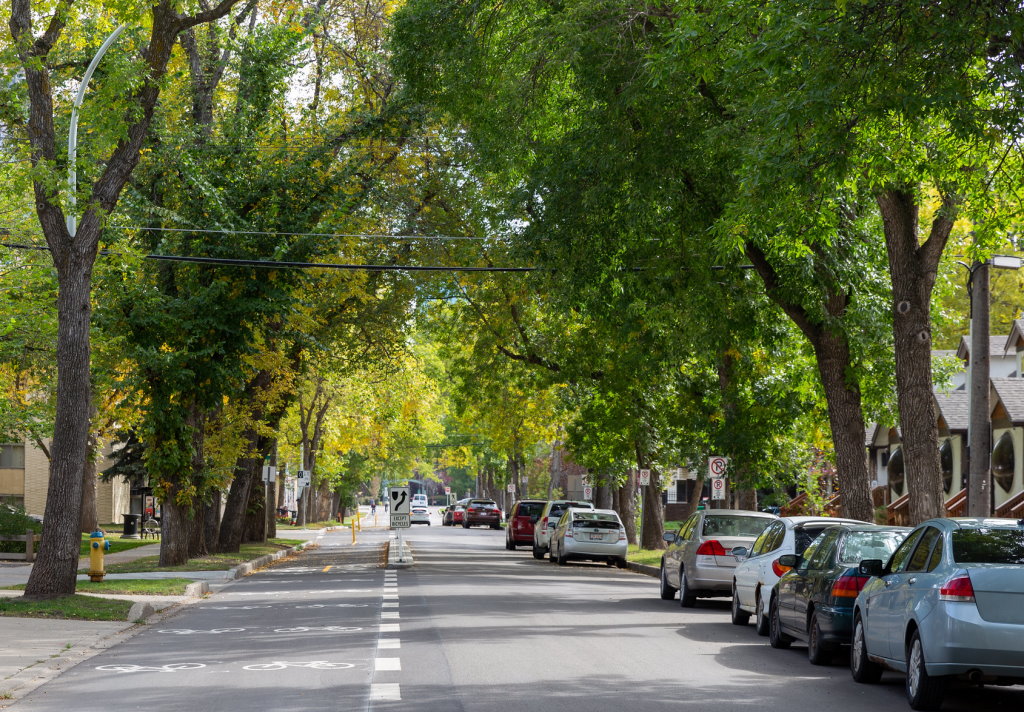A new Public Tree Bylaw would help preserve and protect trees located on public land if approved later this year.
Edmonton's urban forest includes approximately 380,000 boulevard and open space trees and more than 3,000 hectares of natural stands, according to a report that will be discussed by council's urban planning committee on May 25.
Mature trees (defined as having a trunk diameter of at least 40 cm and a height of at least 1.2 metres) account for 15% of those trees and are estimated to be worth over $900 million. Administration says that mature trees alone provide ecosystem benefits of over $10 million each year and that "a strong protection mechanism" is essential "for the sustainability of the urban forest."
The proposed bylaw would consolidate requirements related to public trees and would introduce a new tree permit system to regulate work near trees and to help prevent tree damage or loss on work sites. A permit would be required for any work conducted within 5 metres of the trunk of a boulevard or open space tree or within 10 metres of the boundary of any natural tree stand. Fines for violations of the bylaw would start at $250.
The bylaw would not apply to trees on private property which account for as much as 80% of Edmonton's urban forest, according to some estimates. A few Canadian cities including Toronto, Ottawa, and Richmond have bylaws in place to protect mature trees on private property.
Edmonton has required developers to submit tree protection plans for some kinds of activities since July 2017, but administration says that only "a small percentage of work activities" around city trees are currently captured. Furthermore, it argues that the existing tools "are more reactive than proactive ... and have limited enforcement ability."
Between January 2019 and April 2021, administration says it found 196 work sites that were left in poor condition with different levels of damage to city trees.
Administration says it is considering an application fee for the tree permit program to cover administrative costs. The idea of adding tree protection requirements to existing permits such as development permits or OSCAM permits was explored and rejected in part because administration felt it might "substantially increase the review times" and could "end up increasing red tape rather than reducing it."
Recommendations for the permit fee and a funding request to operate the program will be included in a future supplementary budget adjustment. Administration anticipates returning to council later this year for formal approval of the bylaw.

The proposed Public Tree Bylaw would help protect boulevard trees such as these ones along 102 Avenue in Oliver. (Mack Male/Flickr)
What you can do
Learn about trees: Dustin Bajer, a local tree researcher and archivist, is "a bottomless well of what he calls "tree facts, little tidbits that feed into larger histories of trees." Bajer spoke with the City of Edmonton's Change for Climate initiative about the impact trees have on livability.
Care for trees: The City of Edmonton provides guidelines for planting, watering, and pruning trees on private property. Additional information is available from the International Society of Arboriculture's Trees Are Good site.
Plant a tree: Root for Trees, Edmonton's volunteer tree planting initiative aims to plant 45,000 trees annually in support of the City Plan's goal of planting two million more trees by 2050. Since 2012, volunteers have planted nearly 260,000 trees and shrubs. Online bookings for plantings in June and July open on May 25.
Explore the urban forest: The open data-powered yegTreeMap currently lists more than 268,000 trees across Edmonton and an online map lists more than 40 heritage trees and some crowdsourced favorite trees.
